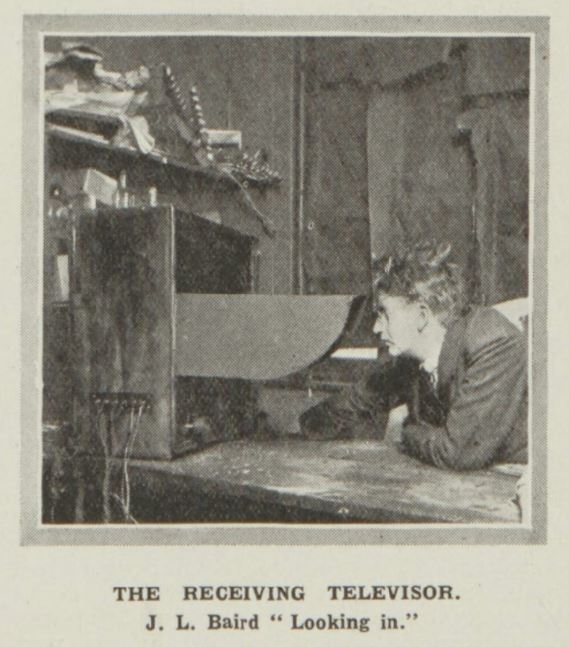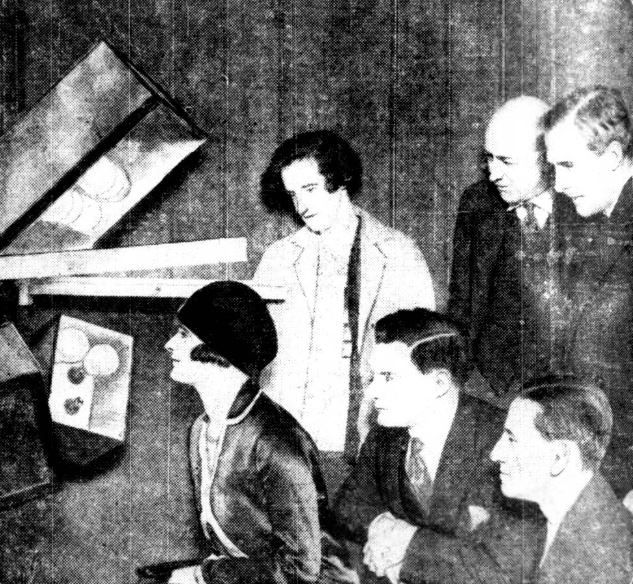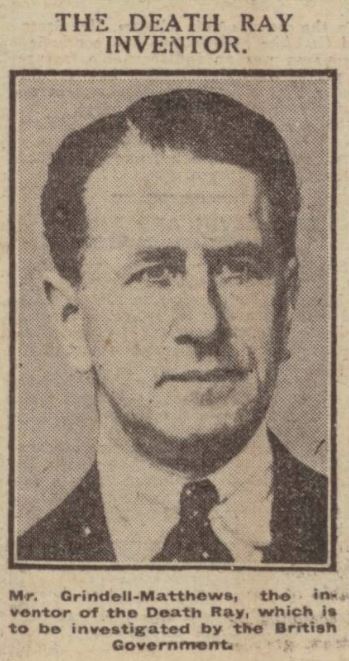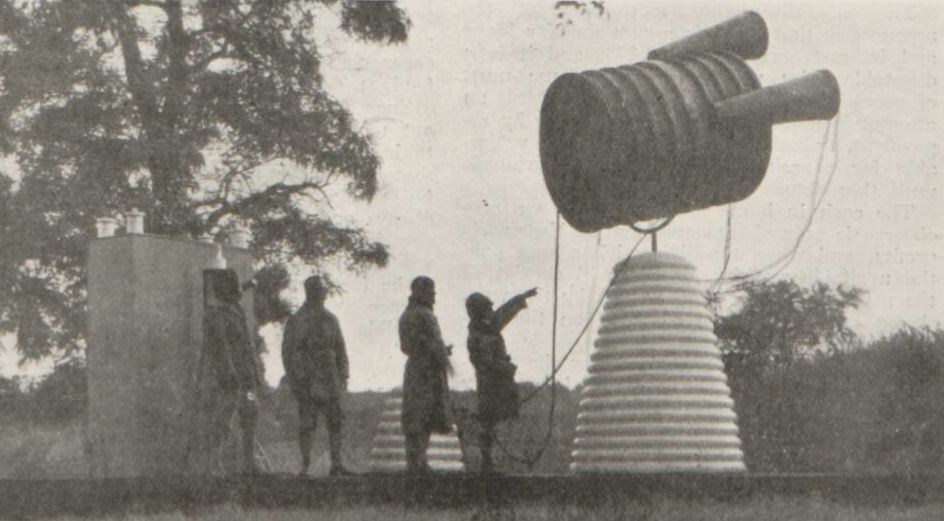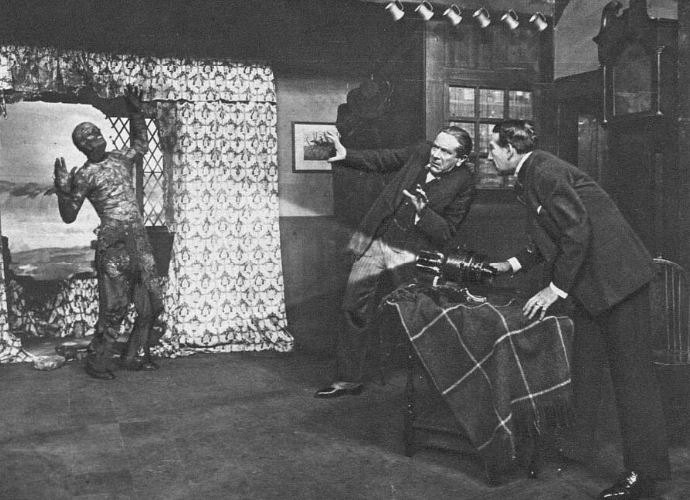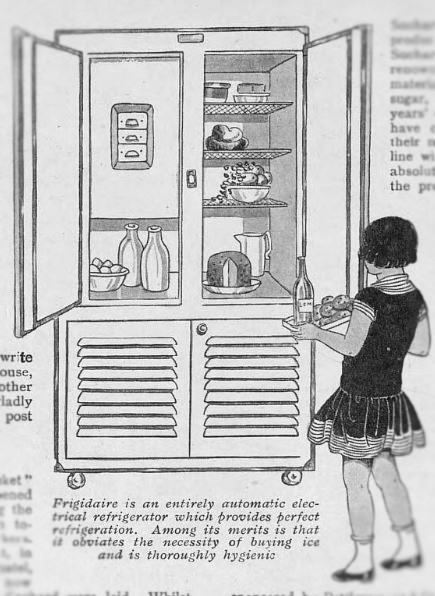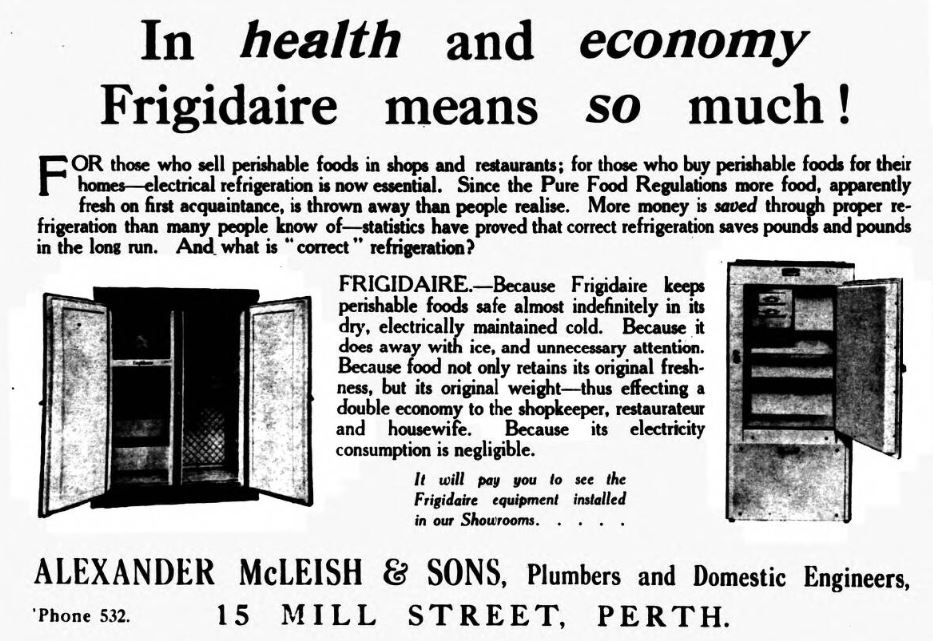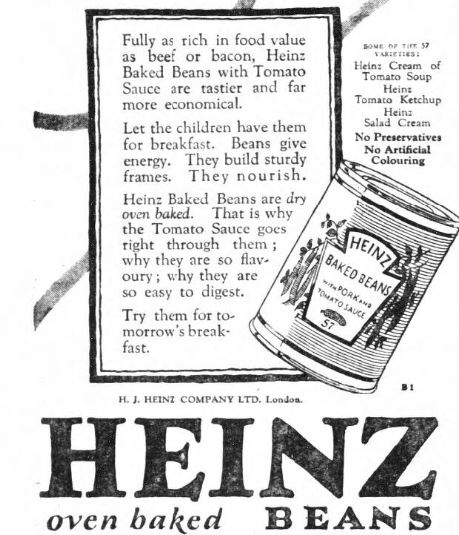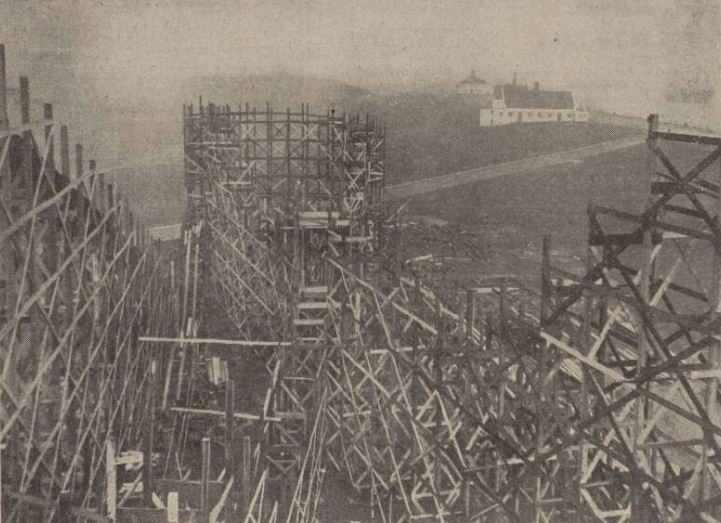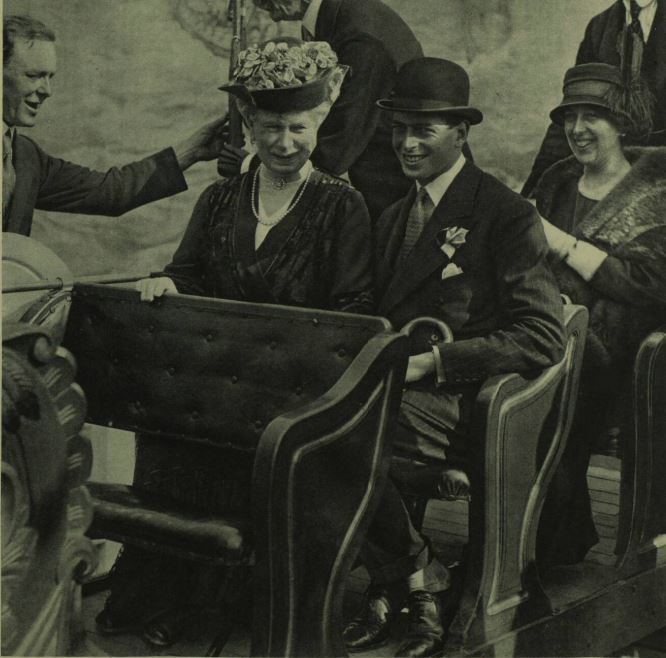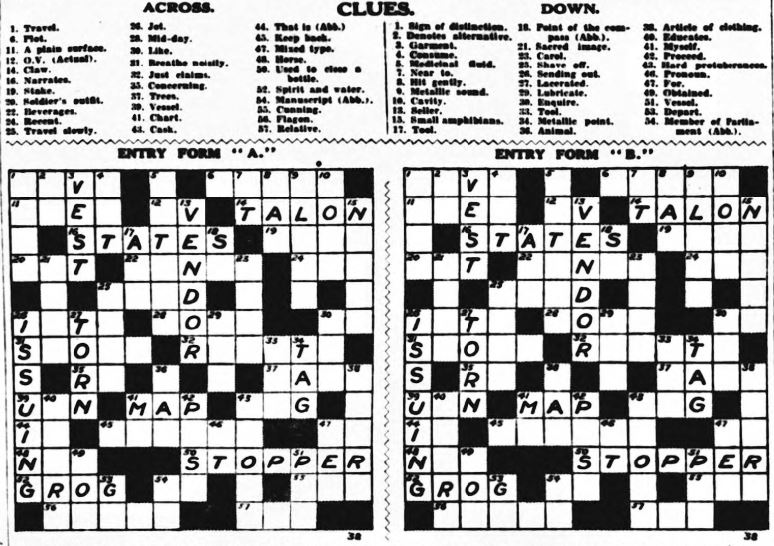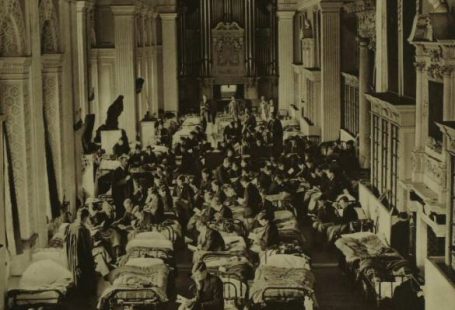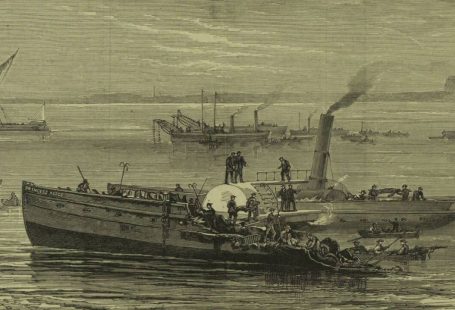The 1920s were a decade of firsts and innovations, and many of the things we take for granted today have their roots in this eventful decade. From televisions to fridges, from roller coasters to Branston Pickle, from crosswords to death rays, we take a look at just a few of the brilliant and bizarre inventions that stemmed from the 1920s – using advertisements and articles from the British Newspaper Archive.
Want to learn more? Register now and explore The Archive
1. TELEVISION FOR ALL
A key innovation of this era was the television, and a key figure in its development was Scottish inventor John Logie Baird. In 1924 he sent rudimentary pictures over a short distance, and by January 1926 he was demonstrating his television transmitter in front of 40 members of the Royal Institute.
The Northern Whig describes how, in his attic laboratory, Baird demonstrated the transmission of ‘moving human images…from one room to another.’ The Bioscope, April 1926, further details how:
On January 27th of this year Mr Baird was able to give a demonstration to members of the Royal Institute of the actual transmission and reception by television of recognisable living human faces. These faces were not sharp, and were somewhat flickering, but showed detail, light and shade, and movement. The eyes could be seen opening and closing: spectators at the ‘televisor’ receiver knew their friends whose likenesses were being sent by the transmitter.
By February 1928, further developments were afoot, as reported in the Daily Herald. Baird successfully ‘televised’ visitors to his laboratory to America, and then, in June 1928, images were televised to the Cunard liner Berengaria whilst she was 1,500 miles out to sea.
‘Successful Television to America’ | Daily Herald | 10 February 1928
And finally, just a month later, Baird was demonstrating the transmission of colour images, a global first. The Nottingham Journal describes what the impressed onlookers saw:
When the sitter opened his mouth his teeth were clearly visible, so were his eyelids and the white of his eyes and other small details about the face. He picked up a deep red-coloured cloth and wound it round his head, winked, and put out his tongue. The red of the cloth stood out vividly against the pink of his face while his tongue showed as a lighter pink. He changed the red cloth for a blue one and carried out other tests.
The spectators got their pennies’ worth out of the sitter – as they kept him for a ‘long time’ doing ‘various things’ at their request. In just the same year, these spectators would have had the chance to buy their own ‘seeing-in’ set for £25 (just over £1,000 in today’s money), ‘to witness in [their] home moving images of events transmitted from a broadcasting station.’
2. THE DEATH RAY – CAN IT KILL?
Whilst some 1920s innovations caught on, others would not survive the decade. One such doomed invention was Harry Grindell Matthew’s ‘death ray.’ Grindell Matthews claimed that his death ray could put engines out of action and shoot down aeroplanes. In 1924, the Leeds Mercury notes that the British Government had to begin to explore the remarkable invention.
But the government – and the press – were sceptical. The Edinburgh Evening News asks ‘Can [the] Death Ray Kill?’ – only to reveal, somewhat anticlimactically, that it ‘didn’t at the tests.’ Allegedly, a government official had stood in front of the ray and escaped entirely unhurt.
This prompted Grindell Matthews to address a letter to the press, offering to demonstrate the ‘death-dealing properties’ of the ray, but only after he had established himself in his new laboratory.
The death ray in action | The Bioscope | 24 July 1924
And although his death ray didn’t take off, it took hold in the popular imagination, inspiring films and plays within the emerging science fiction genre.
Grindell Matthews himself ‘completed the most amazingly interesting film of his famous ‘Death Ray,’ showing how it works and what he knows it can accomplish.’ Five years later, the death ray featured in play ‘The Last Hour’ by Charles Bennett:
It presents the most exciting adventure, woven round the machinations of the wicked Prince Nichola de Kovatch, with the Haviland Death Ray, a new and most murderous discovery which his Government is eager to steal from its hiding-place near Combe Regis, in South Devon.
3. FRIGIDAIRE EXTRAORDINAIRE
A more domestic (and lasting) innovation of the 1920s was the fridge. The American-made Frigidaire was the first brand of fridge to be sold in the United Kingdom. A 1926 article in The Sphere relates how ‘seven million pounds’ was spent by the Delco-Light Company in producing their Frigidaire model.
After gaining popularity in the United States, where sales of the Frigidaire increased from 5,000 in 1921 to an estimated 750,000 in 1926, the company was keen to gain a foothold across the Atlantic.
But the introduction of the fridge was met with some scepticism by the British. There was an assumption ‘that we don’t need such cold storage because we don’t have enough hot weather to make it worth while in the average home.’ But the British population was up against a new challenge: the eradication of preservatives in food.
According to the same article in The Sphere, ‘less preservatives are to be permitted by law,’ meaning that the population had to look for some other way of keeping their food fresh. The answer, naturally, was the Frigidaire.
Advertisements across our Archive detail the various benefits of the Frigidaire:
It requires no attention, one can be absent for days or weeks and on return the food is fresh and pure.
Have Frigidaire NOW and keep your food fresh and pure all the time.
The old ice methods of cooling are gone for ever. Frigidaire – the automatic electric refrigerator – is more convenient, cleaner, healthier and cheaper.
Perthshire Advertiser | 16 January 1929
The ads seemed to work: sales of 10,000 were projected in 1926. And it was even easier to buy a Frigidaire; costing from £64 (about £2,620 today), you could buy one for a £5 down payment in 1929 (costing just over £200 today).
4. PERFECT PICKLE & THE JOY OF BEANS
If the 1920s saw advances in food storage, it also saw the advent of popular foodstuffs which we still enjoy to this day.
Branston Pickle was first produced in 1922. In 1927 The Graphic recommends that it should be paired with ‘cold meat, or to spread in sandwiches,’ and it ‘will appeal specially to the family’s menfolk.’
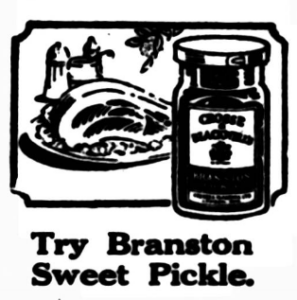
In 1928 Heinz Baked Beans were manufactured in the United Kingdom for the first time. Throughout the 1920s Heinz Baked Beans were marketed as a healthy and tasty food source:
The very thought of Heinz Baked Beans awakens your appetite. The first fragrant whiff from the kitchen makes you hungry. Go ahead and eat all you want. The right Beans are exceptionally high in food value and rich in flavour, Heinz Baked Beans are the most delicious pea beans grown – oven-baked to preserve their food value and flavour. The delicious tomato sauce adds zest and tang and makes the charm of the dish complete.
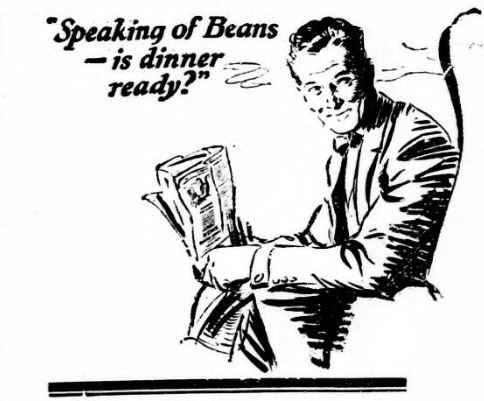
Yorkshire Post and Leeds Intelligencer | 8 December 1924
Beans were labelled as ‘rich in food value as beef or bacon,’ but also ‘tastier and far more economical.’ They could give energy, ‘build sturdy frames,’ and most importantly, unlock the ‘joy of living.’
Sheffield Independent | 25 March 1927
5. ROLLER COASTERS AND CROSSWORDS
There were other firsts in the 1920s which likewise contributed to the ‘joy of living.’ In 1920 the first roller coaster in the United Kingdom was opened at Margate Dream World. Others soon followed in places like Blackpool, Aberdeen and Wembley.
Aberdeen’s scenic railway under construction | Aberdeen Press and Journal | 23 March 1929
Queen Mary in 1924 took a trip on the scenic railway at Wembley, accompanied by her son Prince George. This was to ‘the delight of the crowd,’ and she said ‘she had much enjoyed the trip.’
Illustrated London News | 7 June 1924
Also making its first appearance in the United Kingdom was the newspaper crossword puzzle, with the first appearing in the Sunday Express in 1924. You can find many examples of 1920s crosswords in our Archive (and you can always have a go at solving them), as well as many other inventions and innovations from the past.


